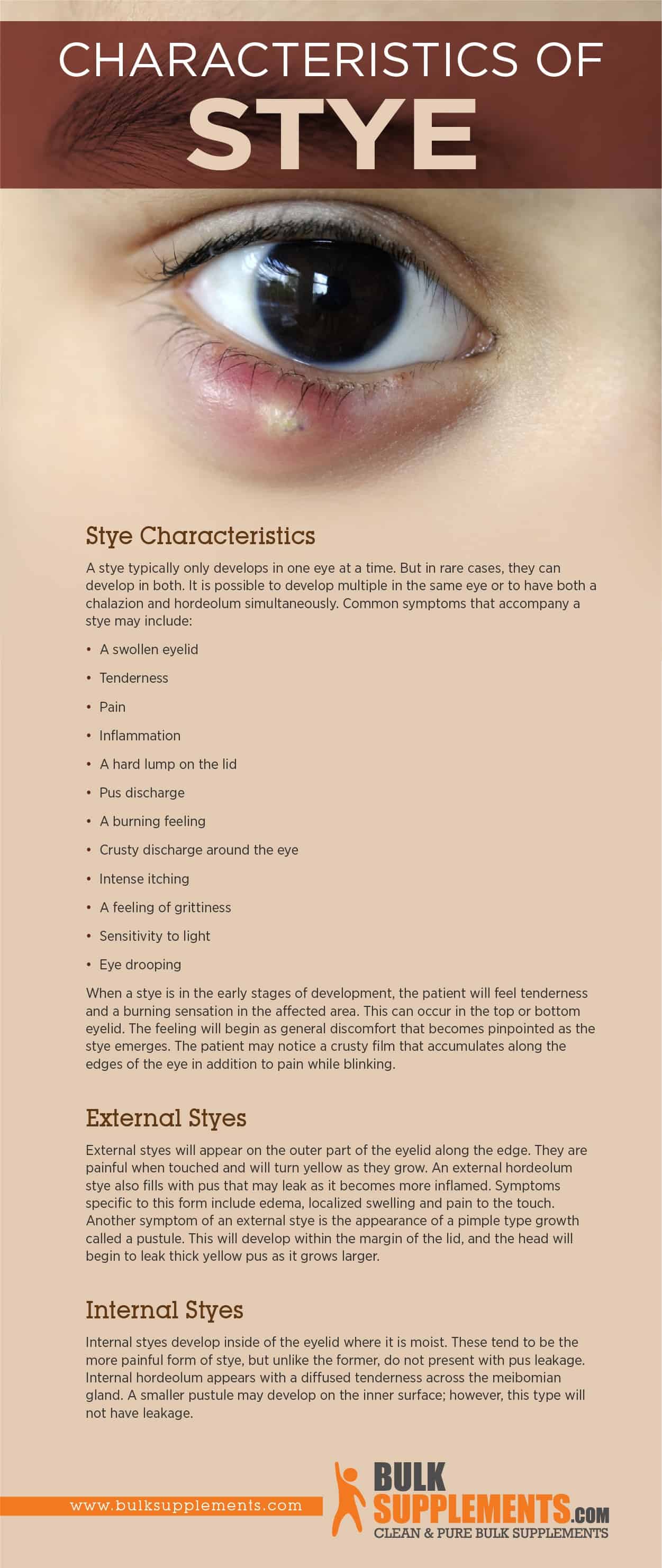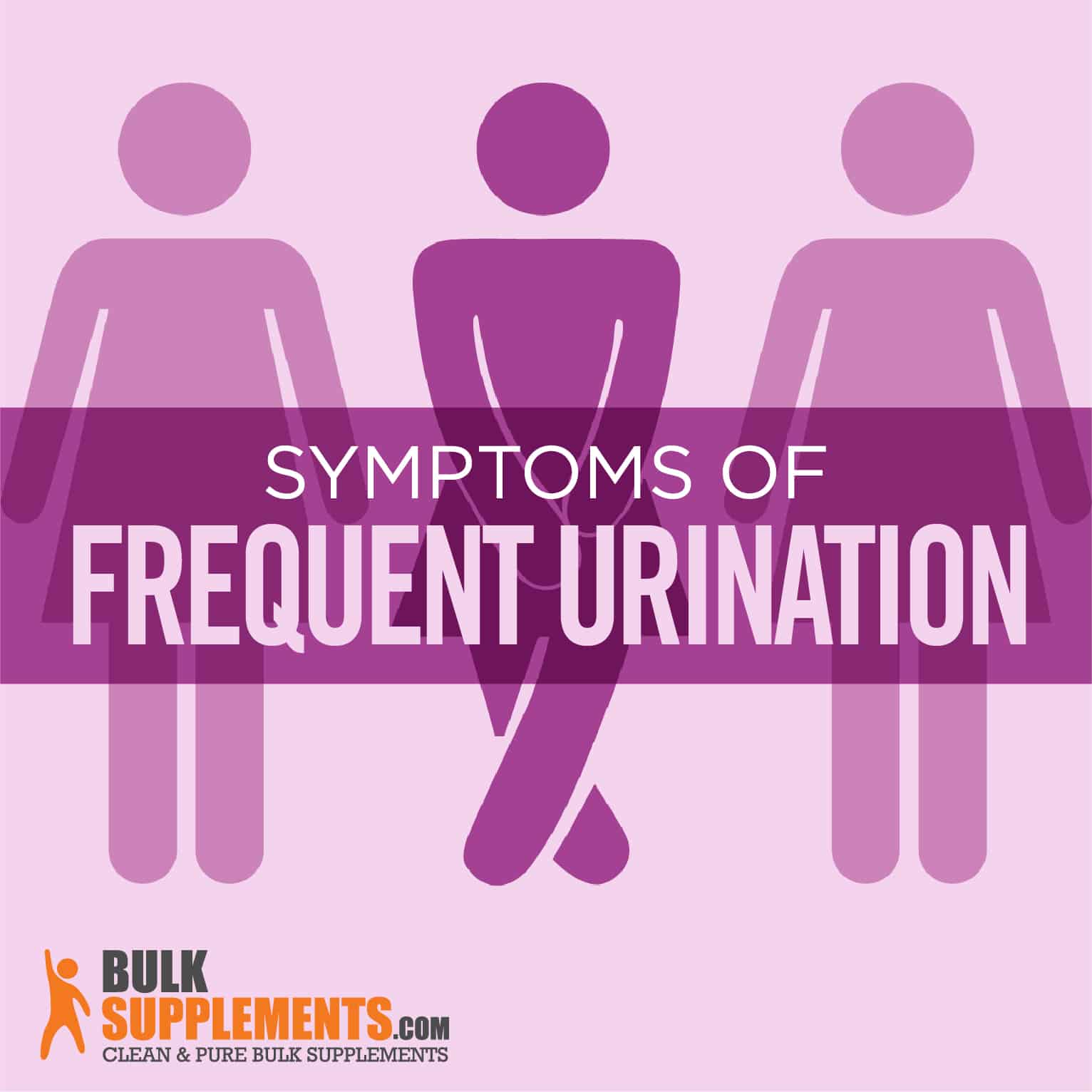Stye: Characteristics, Causes & Treatment

Stye
What is a Stye?
A stye is a very common eye infection. This acute infection is painful and can develop in either the upper or the lower lid of the eye. A stye resembles a pimple or a pustule and usually appears along the rim of the eyelid. If you notice that your eyelid is swelling or that a bump is developing on the top or bottom of the lid, it is most likely a stye emerging. This swelling is accompanied by acute pain even before the bump appears. A stye that develops outside of the eye appears more yellow and will often leak pus.
Most of the time, a stye is no cause for concern. They may take several days to develop fully, but they usually heal on their own within seven days. Those that develop within the eye are more painful, though they don’t exude pus. People who have diabetes, seborrheic dermatitis or high serum lipids are at a higher risk of developing styes.
Two Forms of Stye
There are two forms of stye — chalazion and hordeolum. Though they are both forms of styes, they develop from different causes and thus are also treated in different ways.
A chalazion follows a more chronic course and becomes less inflamed. It develops when the meibomian gland located inside of the eyelid gets blocked. These glands release an oily material called sebum, and these glands are only found on the eye.
A hordeolum, on the other hand, develops when the sweat glands or small sebaceous glands near the eyelashes are infected. Another variant called an internal hordeolum develops when the meibomian gland becomes infected. Hordeolum is the most frequent form of stye, and people between the ages of 30 and 50 tend to be afflicted more often than others.
Stye Characteristics
A stye typically only develops in one eye at a time. But in rare cases, they can develop in both. It is possible to develop multiple in the same eye or to have both a chalazion and hordeolum simultaneously. Common symptoms that accompany a stye may include:
- A swollen eyelid
- Tenderness
- Pain
- Inflammation
- A hard lump on the lid
- Pus discharge
- A burning feeling
- Crusty discharge around the eye
- Intense itching
- A feeling of grittiness
- Sensitivity to light
- Eye drooping
When a stye is in the early stages of development, the patient will feel tenderness and a burning sensation in the affected area. This can occur in the top or bottom eyelid. The feeling will begin as general discomfort that becomes pinpointed as the stye emerges. The patient may notice a crusty film that accumulates along the edges of the eye in addition to pain while blinking.
External Styes
External styes will appear on the outer part of the eyelid along the edge. They are painful when touched and will turn yellow as they grow. An external hordeolum stye also fills with pus that may leak as it becomes more inflamed. Symptoms specific to this form include edema, localized swelling and pain to the touch. Another symptom of an external stye is the appearance of a pimple type growth called a pustule. This will develop within the margin of the lid, and the head will begin to leak thick yellow pus as it grows larger.
Internal Styes
Internal styes develop inside of the eyelid where it is moist. These tend to be the more painful form of stye, but unlike the former, do not present with pus leakage. Internal hordeolum appears with a diffused tenderness across the meibomian gland. A smaller pustule may develop on the inner surface; however, this type will not have leakage.

Causes of Styes
Blockages and Hormonal Changes
Styes can develop for several reasons. The most common cause is when the gland on the eyelid becomes blocked or when a follicle gets clogged. Hormonal changes in the body, as well as stress, can also create conditions that make developing a stye much easier.
Side Effect of Other Illnesses
Patients suffering from various medical conditions such as rosacea or blepharitis are more prone to developing styes. Rosacea is a common skin condition that results in patches of dry, dead skin. Dead skin on the eyelids can cause blockages, which lead to the development of a stye. Blepharitis is a less common disorder that makes the patient’s eyelids inflamed. This inflammation creates a perfect environment for the stye to develop. In very rare instances, styes can develop as a side effect of skin cancer.
S. Aureus Infection
The Staphylococcus aureus bacteria is a common type that lives on the eyelids (x). When the patient’s glands become blocked, this bacteria can cause an infection. The infection then leads to the development of a stye. Eyelids secrete a natural oil called sebum, which helps to keep your lashes and lids lubricated along with protecting them from external irritants. When the eye becomes infected, this smooth oil will become waxy and thick. As a result, the sebum will clog the glands and allow bacteria to fester.
Other Possible Causes
Additional causes are:
- Lack of sleep
- Using expired cosmetics
- Poor eating habits
- Improperly disinfected contact lenses
- Not properly removing cosmetics
- Bacteria on the fingers entering the eye
- Cross infection from someone who has a stye
Anytime bacteria gets trapped in an open wound, or your eye, there is a risk of infection. The most common way these bacteria enter your eyes is through direct contact with your hands. If you suffer from allergies or blepharitis, then chances are you rub your eyes regularly. This alone increases the risk of developing a stye. Those who use makeup testers in public stores or even share makeup with friends are also at risk. People who have had a stye in the past are also more susceptible to having another develop.
Medical Treatment for a Stye
In most cases, you won’t need medical treatment for a stye. However, if it doesn’t resolve after home treatment, your doctor may prescribe a topical antibiotic such as:
- Bacitracin ophthalmic ointment
- Tetracycline
- Dicloxacillin
- Tobramycin ophthalmic solution or ointment
- Erythromycin
For patients with extreme swelling, a steroid injection may be used to help reduce inflammation. In very rare cases, home treatments or antibiotics may be unsuccessful. Surgical removal for a non-resolving stye is typically a last resort.
Home Remedies and Treatments for Styes
There are several effective methods that you can use to treat a stye at home effectively.
Warm Compress
The best way to soothe the discomfort caused by a stye is by applying a warm compress to the affected area. This will also help external styes to drain the pus gently and effectively. Simply take a soft clean towel and soak it in hot water. Apply to the stye for 15-minute intervals a few times daily until the stye is healed.
Echinacea
Echinacea is one of the best supplements to help boost your immune system. It has also been proven to be effective in treating infections in the body. Take 450 mg up to twice daily. However, patients with an auto-immune disease and those who are pregnant or nursing should avoid supplementation.
SEE ALSO

Frequent Urination: Symptoms, Causes, Treatment
Green Tea Compress
Green tea has natural antibacterial properties that make it an effective yet gentle treatment option for styes. Simply soak a tea bag of green tea in hot water and apply it to the affected area. You can also make a gentle paste from green tea powder and apply it to the affected area for the same results.
Chamomile
Chamomile has been used as a natural remedy for many ailments for centuries. It can be taken as a supplement to help fight inflammation or used in water as a topical treatment. Take 800 mg up to twice daily with a full glass of water. You can also dilute the supplement in water and use it as part of a warm compress to help fight swelling and infection.
Other Supplements
Pure horsetail extract and Aloe vera are also effective herbal supplements that can help reduce the negative effects that come with a stye.
Stye Precautions
Washing Hands
Bacteria travels on your hands and can end up in places where they can wreak havoc. Regularly washing your hands helps to reduce the number of bacteria and other particles going into your eye. Your glands will be less clogged, and your risk of developing a stye will be greatly reduced.
Never Pop a Stye
A stye is full of pus that is laden with infection-causing bacteria. Popping it can result in the infection spreading to other parts of your eye, or other areas of your face. Poking your eyelids with a sharp object is also dangerous. Allowing it to drain naturally will ensure that your eye has the best chance of healing infection-free.
Avoid Cosmetics
A stye is unappealing to look at, but avoid covering it with cosmetics. Not only will your brushes become contaminated, but the cosmetics can also hinder your healing. Makeup may irritate the stye or help it to spread to other areas. It is also important to throw away any expired makeup that you own and to make sure that you remove any cosmetics at the end of the day.
Contact Lens Cleanliness
Contact lenses are one of the most common ways by which stye bacteria spread. Contacts that are not properly cleaned can transfer bacteria from the container to the eye. You should also make sure to wash your hands properly any time you handle your contacts.
The Bottom Line
A stye is so common that almost every person will develop one at least once in their lifetime. It is painful, distressing to look at and can appear more than once. But it is not a serious condition. An acute stye will resolve within a week or two. However, chronic stye can persist for several months. The bacteria that causes most styes are always on your eyelid, and even with regular washing, your eyes can still become infected. Internal and external styes create discomfort and are aesthetically unappealing. However, they are not serious and have no lasting side effects.
You can treat a stye at home by using a warm compress and taking echinacea and other recommended supplements. The best medicine is always prevention. Make sure to wash your hands often, remove makeup at the end of the day and clean your contacts properly.



